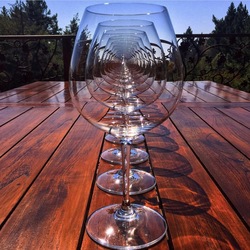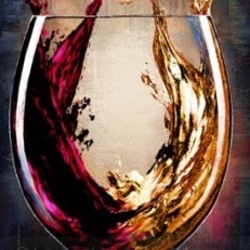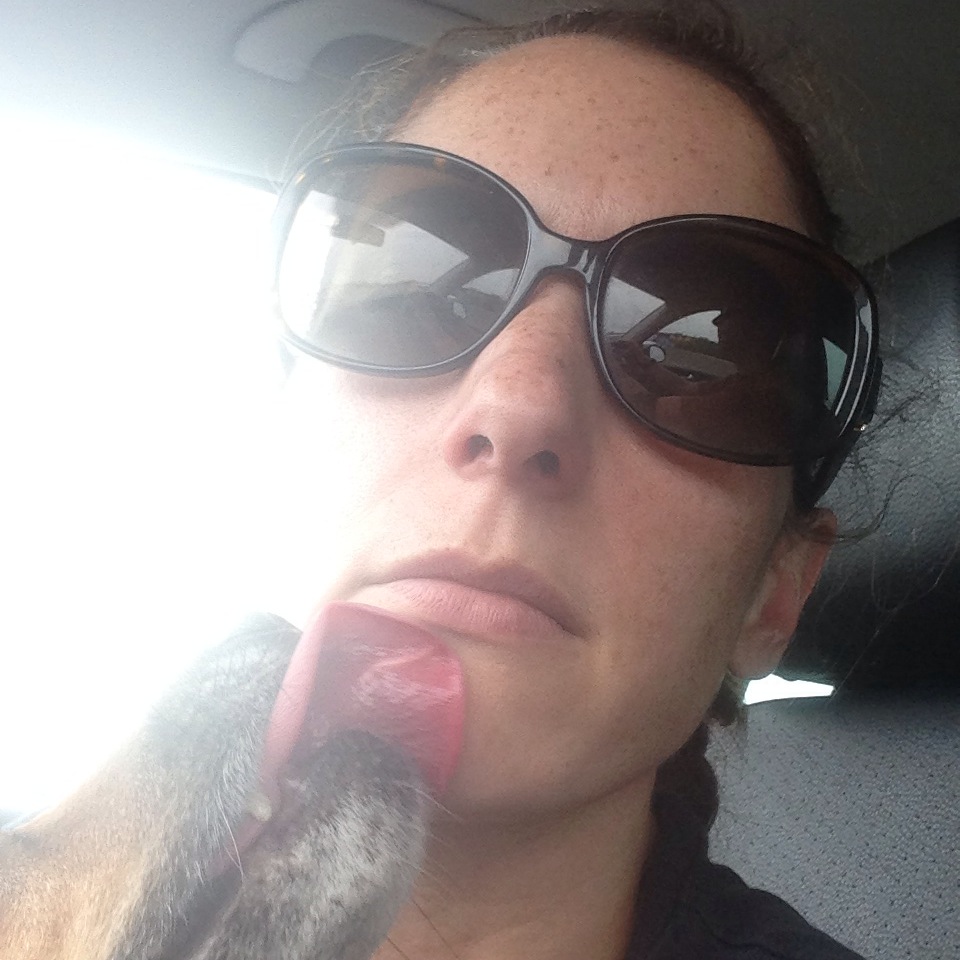Expression De Saint Mont
Tardieu-Laurent
Vieilles Vignes Saint-Joseph Syrah 2015
Château de Saint-Cosme
Gigondas Red Rhone Blend 2015
Complex aromas of Musk, Barnyard Notes , Wet Bark and Dark Cherries. Cola, dark cherries on the pallet. Lots going on here. Exquisite balance of flavor, oak and acidity. Mostly Grenache. Great expression of the Southern Rhône. Will only improve with age. Revisited in September 2021. Yes Indeed. This wine has improved with age! Revisited in March 2022. Bold and meaty! — 8 years ago

Au Pied du Mont Chauve
Saint- Aubin En Resmilly 1er Cru Chardonnay 2013
The last one! — 8 years ago
Producteurs Plaimont
Le Faîte Blanc Côtes de Saint-Mont Arrufiac Blend 2014
Väldigt strukturerat och aromatiskt vin på 70 Gros Manseng 15 Petit Courbu 15 Petit Manseng (6 mån ek). Snustorr, bra syra och lång finish. Ananas, bivax, stenfrukt och vita blommor. 70106 - 219kr. — 8 years ago
Joël Taluau
L'Expression St-Nicolas-de-Bourgueil Cabernet Franc 2014
Solid expression of Cab Franc! Would drink again! — 9 years ago
Domaine Romaneaux-Destezet (Hervé Souhaut)
Saint Joseph Syrah 2010
2010. Pure expression of Syrah, no frills, just incredibly delicious wine. — 10 years ago
Clos du Mont-Olivet
Châteauneuf-du-Pape Red Rhone Blend 2004
SOMM surprised us with this instead of a 2009 saint joseph. I'm not upset at all. 2004 vintage and drinking great. Could use some decanting but nice blackberry and leather qualities. Gorgeous! — 12 years ago
Clos Saint Jean
Deus Ex Machina Châteauneuf-du-Pape Red Rhone Blend 2004


Domaine Faury
Saint Joseph Syrah 2015
A ripe expression of Northern Rhone, yet well balanced. Good juice. — 8 years ago
Duc de Termes
Reserve Saint-Mont Red Blend
Light bitter, full of flavor. Berries — 8 years ago
Château Cos d'Estournel
Saint-Estèphe Red Bordeaux Blend 1991
Is there any meal better than steak (Ribeye) and well aged Claret? This is another 1991 Bordeaux experiment of mine. 1991 was a vintage with horrible frosts and a less than favorable growing season, right? A vintage critically panned. This is my 3rd recent 91 from a good producer. And again, it didn’t disappoint. Like 97 and 07, it’s better with the right bottle age than young. Magic evolution happened in the bottle way down the road. This 91 is in great form with a fair amount of life ahead of it. On the nose; a little ripe fruit funk, wonderful dark & lighter red cassis, ripe blackberries, dark cherries, poached strawberries, plums, hues of blueberries, black raspberries, dry cranberries, vanilla, light cinnamon, rich, black turned earth, cedar, soft leather, dry stones, dry top soil, notes of dry herbs and fresh & dry red flowers. The body/palate is medium, round, ripe & still fresh. The tannins nearly completely resolved. Ripe, floral fruits of; blackberries, dark cherries, poached strawberries, plums, hues of blueberries, black raspberries, dry cranberries & half cooked rhubarb. Vanilla, light cinnamon, touch of clove & nutmeg, rich, black turned earth, cedar, soft leather, dry stones, dry crushed rocks, dry top soil, notes of dry herbs, a little band-aid and fresh & dry red flowers. The acidity drips over the palate and the long, well balanced, still structured, nice tension, good length finish lasts over a minute. Again, love & appreciate the 12.5% alcohol. What a beauty with and without the steak. Next time you’re in your fine wine retail shop and see a quality producers 91 that’s been well stored, buy it and have it with a Ribeye. Photos of; their exotic Estate, Chateau interior, newer barrel room and their vines as viewed from the front of the Chateau that are across the road. Producer notes and history...Cos d’Estournel has a long distinguished history in the St. Estephe. Louis Gaspard d’Estournel, gave his name to the estate after founding in 1811. It did not take long before Cos d’Estournel became famous with wine lovers and royalty all over the world. In those early days, Cos d’Estournel did not sell through Negociants. The owner preferred selling his wine directly to his customers. In fact, Cos d’Estournel was exported to numerous countries across the globe, with a large portion of the production being sold to India. It was that connection to India that inspired much of the unique, east Indian design we see at Cos d’Estournel today. Cos d’Estournel was one of the first Bordeaux Chateaux’s to bottle, label and sell their own wine. This practice continued until the death of Louis Gaspard d’Estournel in 1852. If you’re at the property, the statue on the bench in the front courtyard is of the founder, Louis Gaspard d’Estournel. The Estate was then purchased by an owner that sold their wines on the Place de Bordeaux using the negociant system. If the Chateau was not selling their wines through the negociant system, it would never have been included in the 1855 Classification. Imagine that! So, it turned out to be a fortuitous decision. Cos d’Estournel was sold to the Charmolue family owners of the neighboring Estate of Chateau Montrose. They continued to own the estate until 1917, when it was bought by Fernand Ginestet. This purchase was the beginning of the next major step in the development of Cos d’Estournel. Decades later, the grandchildren of Fernand Ginestet, Jean-Marie Prats, Yves Prats and Bruno Prats took over ownership and management of Cos d’Estournel. In 1995, Bruno Prats sold the property to the Merlaut family, owners of the Taillan Group. The next era in the development of Cos d’Estournel took place in 2000, when Cos d’Estournel was bought by the industrious and wealthy Michel Reybier, who earned his fortune in the food industry. Michel Reybier hired the son of Bruno Prats, Jean-Guillaume Prats to manage Cos d’Estournel. Things further improved with the efforts of Jean-Guillaume Prats who helped design the most modern wine making at that time. A complete renovation of Cos d’Estournel took place in not only the wine making facilities and cellars, but in parts of the Chateau as well. While the wine making facilities are completely modern with their 100% gravity design, the outward appearance retained the original design and feeling that has always been a part of Cos d’Estournel. On October 15, 2012, Jean Guillaume Prats announced he was leaving Cos d’Estournel to join LVMH (Pichon Baron). Jean Guillaume Prats was replaced by Aymeric de Gironde. Following the departure of Aymeric de Gironde in 2017, the owner, Michel Reybier took over managing the Estate. What makes the remodel special is that the cellars of Cos d’Estournel are entirely operated by gravity. There are no pumps of any kind to force the wine. The purpose is to allow a gentleness to the wine and improve its purity and allow for the expression of their terroir. It set a new benchmark for cellars not only in the Left Bank, but in all of Bordeaux. Perhaps, the most inventive part of the cellars is the four 100 hectoliter lift tanks or wine elevators that replace the pumps used in the traditional pumping over and the racking off processes, which introduce air and often destabilize the marc. From the moment the grapes arrive, everything travels by the flow of gravity. Jean Guillaume Prats called this process a “pumpless pump over.” The 91 hectare vineyard of Cos d’Estournel is planted to 65% Cabernet Sauvignon, 33% Merlot, 1% Cabernet Franc and 1% Petit Verdot. The vineyard is located extremely close to the border between Pauillac and Saint Estephe at the southern tip of the Saint Estephe. The Estate has very old Merlot vines as well, which date back more than 100 years. Part of the terroir is situated on the hill of Cos, which is at a high elevation for the Medoc at 20 meters. They also make a second wine called Pagodes de Cos. This is a great wine to buy in very good vintages. Especially, if your budget prohibits you from purchasing their first wine. — 8 years ago

Domaine Dujac
Morey Saint Denis Pinot Noir 2002
Wow! Let it breathe and be suitably rewarded. Stunning expression. — 10 years ago
Clos Saint Jean
Vieilles Vignes Châteauneuf-du-Pape Red Rhone Blend 2011
Amazing expression of CDP... — 11 years ago
Mont Saint Jean
Corbières Carignan Blend 2012
Very easy to drink. Low on tannins. — 11 years ago
Château Haut Mont-Saint-Fort
Bordeaux Contrôlée Red Bordeaux Blend 2008
福袋の1本 美味しい! — 13 years ago
Domaine Bersan
Saint-Bris Mont Embrasé Sauvignon Blanc 2015
Fantastic wine. Paris well with goat cheese — 8 years ago
Hubert Lamy
En Remilly Saint-Aubin 1er Cru Chardonnay 2010
I bought my first vintage from this producer & terroir beginning with the 2010 vintage and what a vintage to start. I bought four bottles for right around $50 or a little less. They were so amazing, I drank through them in no time at all. For those of you that read my posts, that’s not normally what I do. I like to drink one & age the rest. Since then, I have looked & looked for more. I’d finally given up hopes of finding more until recently I struck gold. I should have bought all nine bottles but a calmer head prevailed. It’s definitely changed since having it fresh. On the nose, the fruits are slightly macerated. Heather honey, beeswax, golden & green apple, pineapple upside down cake, slight orange citrus blend, mango, glazed nuts, soft, delicate, chalky minerals, a touch of jasmine & yellow lilies. The body is much rounder & thicker than when it was young. Waxy. So, beautifully layered across the palate. Much of the palate matches the nose. Heather honey, beeswax, golden & green apple, apricots, peach, pineapple upside down cake, slight orange citrus blend, mango, slight molasses character & glazed nuts with citrus blossoms, yellow lilies & jasmine. The minerals are much more grippy & bold as they cut across and set on the palate. The acidity round & phat. The texture is amazing as is the length, balance & beautiful, rich, long finish that lasts two-minutes plus. So glad I found more of this wine! Hubert Lamy seriously over deliver the terroir & the price point by a country mile. If you are not buying this wine on pre-arrival, you are missing great wine and excellent value. Can’t say enough good things about it. Especially, the 2010. I expect the 15 to hold similar quality. Photos of; Olivier Lamy, Olivier working in this vineyard, barrel room and their Criots-Bâtard-Montrachet Vineyard. Producer notes and history...There have been Lamy’ s growing vines in St-Aubin since 1640, today it is run by Olivier Lamy. Olivier is a new breed of Burgundian grower keen to progress. He trained Méo-Camuzet & made a number of vintages before taking over in 1996 from his father Hubert. Hubert Lamy used to sell fruit to négociants, but that stopped in 1997. He grubbed up and sold off peripheral vines, keeping only the best and oldest sites. Currently he is experimenting with different planting densities in a quest to capture even greater expression of terroir. The Domaine produces both reds and whites and now has 16.5 hectares of vineyards, mostly in St-Aubin but also own a few parcels in Chassagne-Montrachet and a tiny plot in the Grand Cru Criots-Bâtard-Montrachet. Yields are kept low and recent innovations have been introduced with selection tables in the cuverie to ensure that only the healthiest and ripest grapes are used. His more recent move to reduce the amount of new oak with the introduction of demi-muids 300-600 liter barrels have also helped to improve the wines. Vinification is traditional and the wines are matured with only 20-30% new oak for 12 months before minimal filtration and then bottling. The quality is very high and is often superior to many wines from much more prominent villages that sell at twice the price or more. — 8 years ago
Domaine Robert Chevillon
Les Saint-Georges Nuits-Saint-Georges 1er Cru Pinot Noir
A lovely expression of Nuits ! The 02 is in a GREAT place. Paired with a Pork tenderloin & Belly with Chanterelle mushrooms & a wonderful polenta — 8 years ago
Pierre-Yves Colin-Morey
En Remilly Saint-Aubin 1er Cru Chardonnay 2011
Wilf Jäger bottling with vines closer to Chev Mont. Beautiful wine starting to lose youthfulness and pick up, caramel, nougat, savory character. Still focused but secondary flavors emerging. — 9 years ago
Yves Cuilleron a Chavanay
L'Amarybelle Saint-Joseph Syrah 2011
Really nice expression of Syrah. Rose nuances, dark fruit, fennel. Perfect pairing with rack of lamb. — 9 years ago
Producteurs Plaimont
Les Vignes Retrouvées Côtes de Saint-Mont Red Blend 2014
.... goûte d agrumes !!! — 9 years ago
Vignobles de Gascogne
Contrescarde Réserve Madiran Tannat Blend 2010
Saint-Mont — 11 years ago
Château Clos Magne Figeac
Saint Émilion Red Bordeaux Blend 2009
A lovely, classic fruitful expression of Merlot. Appropriate, classic levels of brett and oak. Never had it before, but glad to have discovered this. — 12 years ago



















Jeremiah Allen
Blueberry compote, Raspberry, Plum. Nice combo of rich fruit with and edge of tartness. All classic secondaries are present: cured meat, black pepper, smoke. Showing the vintage, for sure. I like this expression of Saint-Joseph and think Syrah fans of all regions would find something pleasing in this bottle. — 7 years ago